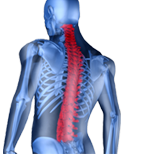Cervical Facet Medial Branch Block

WHAT ARE CERVICAL FACET JOINTS?
Facet joints are found on both sides of the spine. Each is about the size of a thumbnail. Cervical facet joints are named for the vertebrae they connect and the side of the spine where they are found.
The right C2-3 facet joint, for example, joins the 2nd and 3rd vertebrae on the right side. Facet joints not only connect the vertebrae, but they also guide the spine during movement.
WHAT IS CERVICAL FACET JOINT PAIN?
Cervical facet joint pain is a result of injury, either to the cartilage inside the joint or the connecting ligaments surrounding the joint.
Pain from an injured cervical facet joint may range
from muscle tension to more severe pain. Depending
on which facet joint is affected, the pain may occur in an area from
your head down to
your shoulder blade.
The diagram
shows areas of
pain usually
associated
with specific joints.
HOW DO I KNOW IF I HAVE CERVICAL FACET PAIN?
If you have pain in one or more of these areas when you turn your head, and it has lasted longer than two months, you may have cervical facet pain.
Common tests such as x-rays or MRIs may not always
show if a facet joint is causing your pain.
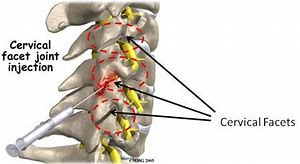
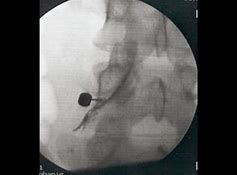
WHAT IS A CERVICAL FACET INJECTION?
During this procedure, a local
anesthetic (numbing medicine)
and a corticosteroid (anti-
inflammatory medicine) are
injected into one or more cervical facet joints.
The injection can be used
to diagnose or treat. If
the injection temporarily
lessens your pain and helps
you move better, your doctor
will know which facet joint
is causing the pain. The corticosteroid is used to
treat inflammation
of the facet joint.
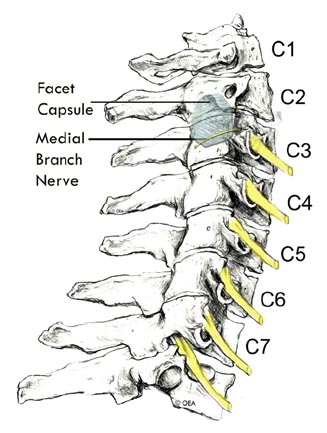
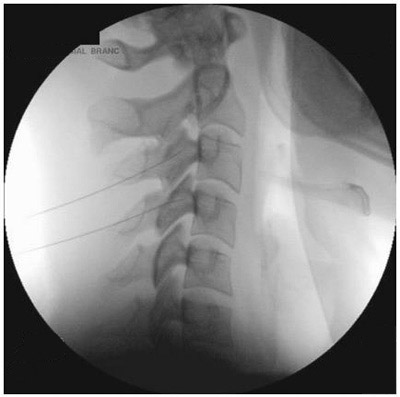
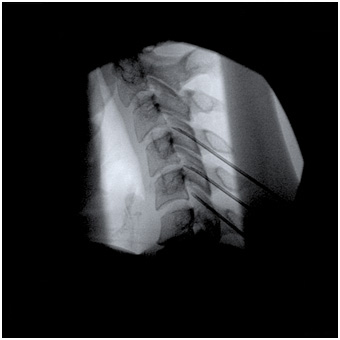
WHAT HAPPENS DURING AN INJECTION?
The injection may start with an IV (medicine given
intravenously) to help you relax. A local anesthetic may be used to numb your skin.
The doctor will then insert a thin needle directly into the
facet joint. Fluoroscopy, a type of x-ray, may be used to ensure the safe and proper position of the needle. A dye
may also be injected to make sure the needle is in the correct spot.
Once your physician is sure the needle is correctly placed, the medicine will be injected.
WHAT HAPPENS AFTER AN INJECTION?
You will be monitored for
up to 30 minutes after the
injection. Before you leave, the clinic will
give you discharge
instructions as well as a pain diary. Keeping
track of your pain
helps the doctor know
what the next step will be.
You may want to check
for pain by moving your
neck in ways that hurt before
the injection, but do not overdo it. You may feel
immediate pain relief and
numbness in your neck and arm for up to six hours after the injection. This means the medication has reached the right spot.
Your pain may return after this short pain-free period,
or may even be a little worse for a day or two. This is normal. It may be caused by needle irritation or by the steroid itself. Steroids usually take two or three days to start working, but can take as long as a week.
You should be able to return to work the day after the injection, but always check with your doctor.
HOW LONG CAN I EXPECT PAIN RELIEF?
Depending on the number of injured areas and the
amount of inflammation, an injection could offer
several months of pain relief before further treatment
is needed. If there is no underlying bone or joint
problem, one injection could bring long-term pain relief. If your pain is caused by injury to more than
one area, only some of your symptoms may be helped by one injection.

